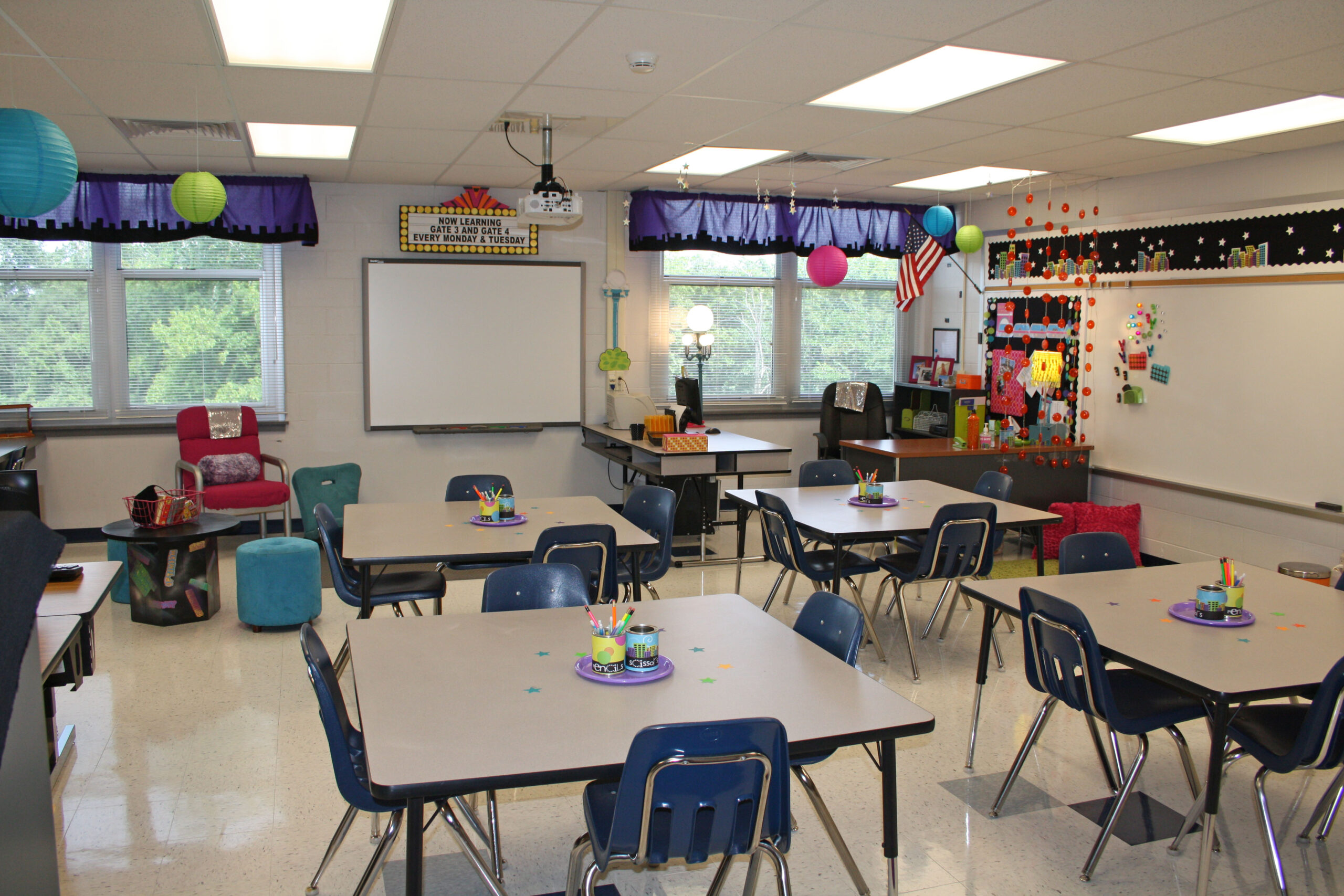SEL Tip: Summer Classroom Makeover

As summer approaches, it’s the perfect time for teachers to rethink their classroom layouts and organization to better support social-emotional learning for the upcoming school year. By creating a space that promotes SEL, you can help students feel safe, connected, and ready to learn. Here are some strategies to consider as you prepare for a summer classroom makeover, with detailed suggestions to make these ideas actionable.
Create a Welcoming Entryway
Your classroom entrance sets the tone for the day. A welcoming entryway can help students transition from home to school with ease and positivity.
How to do it:
- Materials: Bright posters, welcome signs, student name tags.
- Instructions: Decorate the entrance with welcoming signs such as “Welcome to Our Class!” and “We’re Glad You’re Here!” You can also use posters with positive messages like “Every Day is a New Beginning” or “You Belong Here.” Add a space where students can place their personal items, such as cubbies or hooks with their names. Greet each student personally as they enter to make them feel valued.
Designate a Calm Down Corner
A Calm Down Corner is a safe space where students can go to regulate their emotions and practice self-management skills.
How to do it:
- Materials: Comfortable seating (bean bags, pillows), sensory tools (stress balls, fidget spinners), calming visuals (posters, nature images).
- Instructions: Set up a cozy corner in the classroom with calming tools like stress balls, fidget spinners, and coloring books. Use visual aids such as posters with deep breathing exercises or pictures of nature scenes. Teach students how to use this space effectively and allow them to visit as needed. Include instructions like “Take three deep breaths” or “Count to ten slowly” to guide students in calming down.
Organize Collaborative Work Areas
Group work is essential for developing relationship skills and social awareness. Design your classroom to facilitate collaboration and communication.
How to do it:
- Materials: Group tables or desks, shared supplies (markers, paper, scissors).
- Instructions: Arrange desks or tables in clusters to encourage group work. Provide bins or caddies with shared supplies like markers, paper, and scissors at each group station. Establish norms for group work with posters stating “Listen to Others,” “Take Turns Speaking,” and “Respect Everyone’s Ideas.” Encourage students to use these norms during group activities.
Display an Emotion Chart
An emotion chart helps students identify and express their feelings, a key aspect of self-awareness and self-management.
How to do it:
- Materials: Emotion chart, magnets or sticky notes.
- Instructions: Place the emotion chart in a visible area. Each morning, have students check in by placing a magnet or sticky note next to the emotion they are feeling, such as happy, sad, angry, or excited. Use this as a conversation starter to help students articulate their emotions. You can also add a “Feelings Wheel” to help students identify more specific emotions.
Incorporate a Goal-Setting Wall
A goal-setting wall encourages students to set, track, and achieve their personal and academic goals, fostering a growth mindset.
How to do it:
- Materials: Bulletin board, index cards, markers, pins.
- Instructions: Create a space where students can write their goals on index cards and pin them to the board. Periodically review and update goals, celebrating achievements and discussing next steps. Add motivational posters around the goal-setting wall with quotes like “Believe You Can and You’re Halfway There” or “Dream Big, Work Hard.”
Set Up a SEL Library
A well-stocked SEL library can provide resources for students to learn about emotions, relationships, and decision-making.
How to do it:
- Materials: SEL books, posters, comfy seating.
- Instructions: Curate a collection of books that focus on SEL themes. Arrange them in a dedicated area with comfortable seating like bean bags or floor cushions. Some excellent books to include are:
- “The Color Monster” by Anna Llenas
- “Have You Filled a Bucket Today?” by Carol McCloud
- “The Invisible Boy” by Trudy Ludwig
- “What Should Danny Do?” by Ganit & Adir Levy
- “My Mouth is a Volcano!” by Julia Cook Encourage students to read and discuss these books as part of your SEL curriculum.
Implement Flexible Seating
Flexible seating options can help meet diverse student needs and preferences, promoting comfort and engagement.
How to do it:
- Materials: Various seating options (yoga balls, standing desks, cushions).
- Instructions: Offer a range of seating choices like yoga balls, standing desks, and floor cushions. Allow students to select what works best for them. Rotate seating arrangements regularly to keep the environment dynamic and inclusive. Establish guidelines for using flexible seating respectfully and responsibly.
Share These Tips with Fellow Teachers As you prepare your classroom, consider sharing these SEL-focused strategies with your colleagues. Collaboration and shared practices can create a more cohesive and supportive school environment.
In Conclusion
Organizing your classroom with SEL in mind can significantly impact your students’ emotional and academic success. By creating a space that promotes self-awareness, self-management, and social skills, you help students feel more connected and ready to learn. Embrace these changes over the summer to foster a positive and nurturing classroom environment for the next school year.
If you found this content helpful, you might enjoy this Imagineerz blog post and check out Designing the Perfect Social-Emotional Learning Classroom!


